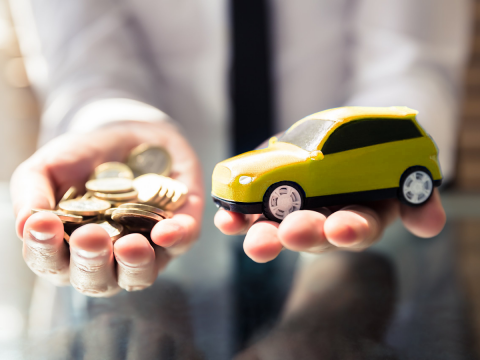to get insurance quotes in your area
What to do after a car accident thats not your fault

There are many people in the world who believe that if they are safe drivers, they will never get into an accident. Even the ones that do may think that there is no way an accident would be their fault. Despite this, it is likely that somewhere around half of the people who are getting into car accidents are deemed to be at fault. There are numerous situations that can occur, and sometimes getting into a car accident is partially just bad luck. Either way, if you are in an accident that is your fault, the response can be a little bit different than getting into a car accident that is not your fault. Knowing what to do after an auto accident that’s not your fault is important. If you skip steps or do something like fail to get the other person’s insurance information, you could end up paying the bills for damages another person’s auto insurance providers should cover. Get the information on the steps you should take if involved in this type of accident. In some cases, the police will determine who is at fault in an accident. Some states have additional staff to help determine this if necessary. Insurance companies can also have a say. If you are in an automobile accident, whether it is a minor fender bender or a severe car crash, the first step is to breathe in. You can bookmark this page if you want to have an easy to access list available as a reminder.
Some Statistics For Car Accidents
Each year there are over 35,000 fatalities from car accidents, with some years having thousands more. Automobile accidents are the fourth preventable cause of death in the United States. The only ones that are higher are heart disease, cancer, and chronic lower respiratory conditions. People do not expect to get into an accident, so they can be quite traumatic for both the driver and the victim. Some people who get into car accidents find it difficult to drive and are a little bit more on edge when driving with other people. Being a safer driver decreases your risk of being in an automobile accident immensely. By driving defensively and following the laws, you are less likely to get into a crash. Either way, there are other people driving their vehicles as well, and they might not be being as careful as you are. Even the most careful car operators are likely to be involved in some sort of accident at some point in their life. Every 18 years, a driver is likely to file an insurance claim for collision, another notable statistic. Having knowledge about what to do if you are in a vehicle accident and not at fault is essential.
What To Do After A Car Accident That's Not Your Fault
Many of these tips are also excellent if you are at fault in an accident; there is great power in knowledge. Take a deep breath and remain calm. The following seven steps are important to follow. Just in case an emergency occurs, having a small notebook, pen, and emergency telephone numbers in your glove compartment can make a big impact on how things play out. Since most accidents happen close to home, knowing if there is a non-emergency number for the police can be beneficial as well. The notebook is available to take down other people’s insurance information, contact information, and license plate number. In addition, since human memory is not 100% accurate all the time, writing down notes in your notebook about the accidents, the damage, what happened, information from witnesses if they offer it, and more can be very helpful. This information can be especially helpful if there are legal matters that happen. Notebooks are generally recommended over cell phones because they cannot lose power or be broken over the course of an accident.
Step Number One
The first step is to call the police immediately. Regardless of whether the crash was a fender bender or a more serious accident, calling the authorities is a good step. The police will make a record of what both you and the other driver are saying. Police reports can help speed along insurance claims. By staying at the scene and talking with the cops, you will have a stronger case for the insurance company to accept your claim. Some auto insurance companies will not accept certain types of claims unless there is a police report. The police can also assist in getting your vehicle out of the flow of traffic. The driver of the vehicle, as well as the passengers, should remain in the vehicle and turn on their hazard lights until police arrive if the accident occurred in the middle-of-the-road and there is no imminent danger. If the accident only involves a scratch or a bump, you may not need to call the police. Many states, however, require the police to be called regardless of the amount of damage. If you are not sure, it is best to call.
Step Number Two
The second step is to exchange relevant information. This can include the name, address, and phone number of the person you got into an accident with. The insurance company's contact information and your policy number should also be exchanged. In addition, your driver’s license information and license plate number should be exchanged. Getting this information will help speed up your insurance claim and can also help your attorney if you should decide to hire one. You should also get information from any witnesses to the car accident that are willing to provide it. Get their immediate thoughts on what occurred, and record them in your notebook if you have one. In addition, write down badge numbers for the officers who arrive on the scene, as well as the contact information for the ambulance if one is used. Do not discuss the particulars of your accident with anyone except for your hired law professionals, the state authorities, and medical professionals who may need the information provided for medical purposes. Other than exchanging information, do not talk to the other driver.
Step Number Three
Make sure to take photographs of the scene. This includes damage to your car, damage to the other person’s car, pictures of the environment, the weather, skid marks, injuries, license plates, anything you may think could be relevant if your insurance company disputes the claim or if you end up in court.
Step Number Four
Make sure to follow up. Even if a vehicle accident does not result in injury, this step is important. Also, note that law enforcement might not even respond to the scene. If this is the case, filing a report with your DMV or Department of Motor Vehicles can help create a paper trail that can be beneficial later. There are some situations where you will need to submit your own report.
Another part of following up is making sure you visit your primary care physician to get looked over, particularly if you are experiencing pain after an accident. This also creates a paper trail that helps tie the accident to any injuries that are caused. You can make sure that there is no gap in treatment, and the additional information can be useful for making sure your claim is accepted.
Step Number Five
Contacting your insurance company is an essential step to the process. Review your own policy before calling. Also, review what is covered and how it might relate to the accident itself. You can work with your insurance adjuster to make sure that the other driver’s insurance coordinates with your own insurance if necessary. If this happens, damages will be covered faster and more efficiently, allowing people to complete the process sooner.
Step Number Six
If an accident is your fault, you can still call a car crash attorney for advice and to have them on hand in case anything about the accident is disputed.







Add new comment